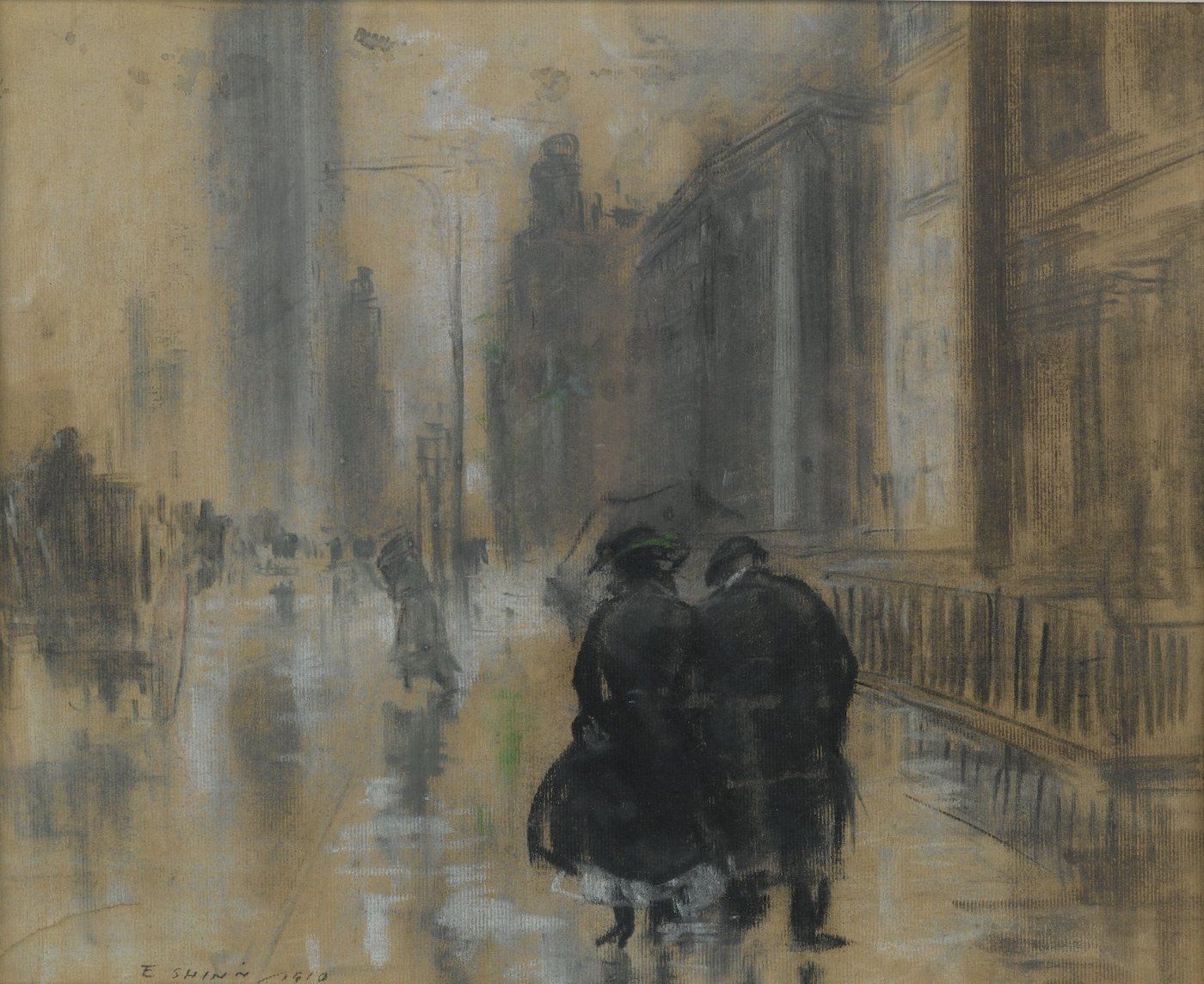Spring Rains Feed a Lost Brook

When the spring rains pour and create rivers through the streets, do they also feed a long-buried creek? Minetta Brook once flowed two miles through Manhattan, from today’s Fifth Avenue and 21st Street—and a marsh at Sixth Avenue and 70th Street—down along Washington Square Park. It then followed the streets still named for it—Minetta Lane and Minetta Street—before heading west down Downing Street to the Hudson River. It was tantalizingly full of fish and drew people to live on its shores, including free Blacks who built farms here in the 17th century.
In the early 19th century, it was diverted for a sewer and then finally covered. Some say it still flows underground. A plaque at Two Fifth Avenue declares: “A brook winds its erratic way beneath this site.” A fountain in its lobby is said to sometimes surge Minetta’s water through its tall pipe. Basement floods along its former route are blamed on the creek; there are reminders of it everywhere, from the Minetta Green park to Minetta Triangle, where trout are carved on the bluestone path.
It is far from the only waterway to be lost as Manhattan’s topography was smoothed into a metropolis, a place where it is now hard to imagine the hills, rivers, animals, and dense forests that have been replaced with concrete and buildings. Spring Street was named for a spring, Canal Street for a canal. But what is buried does not have to be forgotten.
Go to Washington Square Park, walk to Minetta Lane, following the creek’s former path to the river. Note the trees, the unruly street foliage: does it flourish in places more than others due to some subterranean source? Let your body flow like its currents and try to remember the waters that once ran here, and maybe still course below your feet, waiting to rise with the rains.

- While in Greenwich Village searching for the lost creek, stop by Thompson and Bleecker streets. This is the site of the Village Gate nightclub where Bob Dylan in 1962 wrote “A Hard Rain’s A-Gonna Fall.” Sing at the top of your lungs as the storm brews.
- Visit Manhattan’s Collect Pond Park to pay homage to another lost water source. There was a 60-foot-deep pool here fed by an underground spring that provided fresh water to the city until it was too contaminated and was filled. A reflecting pool now evokes its memory; walk its bridge in summer months and remember.
- Brooklyn’s Grand Army Plaza was once home to a spectacular unnatural water feature: the Electric Fountain. Debuting in 1897 with a fantastic array of arc lamps and hydraulics, it delighted locals with the marvel of electricity until it had to be destroyed to make way for the IRT subway.




